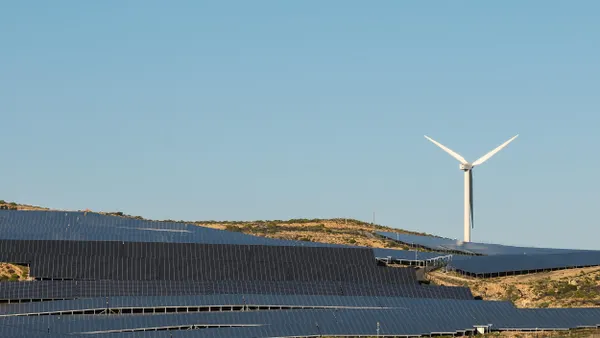Dive Brief:
-
The federal judge supervising Pacific Gas & Electric's (PG&E) reorganization proceeding on Tuesday approved two settlement agreements — totaling $24.5 billion — between the utility and committees representing Northern California wildfire victims and insurance companies, bringing PG&E much closer to exiting bankruptcy.
-
The agreements include an $11 billion payout to holders of subrogation claims against PG&E as well as $13.5 billion to the tort claimants committee. They were approved despite concerns raised by California Gov. Gavin Newsom, D, about the feasibility of PG&E's restructuring strategy and provisions in the deal “limiting competition.”
-
Also on Tuesday, the California Public Utilities Commission's (CPUC) safety division, PG&E and other parties proposed a $1.67 billion settlement to resolve the utility's role in causing wildfires in 2017 and 2018.
Dive Insight:
PG&E's $13.5 billion settlement with the wildfire victims' committee marks a significant milestone in its bankruptcy proceeding. The deal resolves claims from the 2015 Butte Fire, 2017 North Bay fires and the Camp Fire in 2018, and could jeopardize the progress of a competing reorganization plan filed by the company's bondholders — which the committee had previously supported. With the $11 billion subrogation settlement and a $1 billion payout to cities and counties affected by the fires, PG&E has come a lot closer to resolving the liabilities that pushed it into bankruptcy in the first place.
U.S. Bankruptcy Judge Dennis Montali agreed to approve both settlements with “lock-up language” — provisions that prevent the settling parties from negotiating with the competing bondholders — in large part because he trusts the judgment of the wildfire victims, he said. He noted that while many of the creditors in PG&E's bankruptcy had chosen to do business with the utility, the fire victims “didn't choose to be creditors and didn't choose to be anything other than people who live their lives normally.”
Montali's approval comes despite reservations expressed by Gov. Newsom in a strongly-worded letter to PG&E Corp. President and CEO Bill Johnson last Friday. The company's current reorganization plan is not compliant with AB 1054 — legislation passed by the state in July that outlines conditions for the utility to access a newly-created wildfire insurance fund — according to Newsom, since it would not result in a reorganized PG&E “positioned to meet the compact of providing safe, reliable, and affordable service to its customers.”
Newsom's attorneys elaborated on his views in a filing with the court Monday, saying that while “fair treatment of victims is good,” provisions in the agreement that prevent the tort committee from throwing their support behind a different reorganization plan suggest that it is more about “an illusion of momentum.”
“We think the parties need to recognize that AB 1054 is not a rubber stamp and we need to get to the changes [in the plan] necessary,” Nancy Mitchell, an attorney for Newsom, said at the hearing.
But tort claimants committee attorney Cecily Dumas listed the variety of reasons the committee decided to enter into an agreement with PG&E, despite previously endorsing the bondholders' plan: the looming June 30 deadline, placed by AB 1054, for PG&E to emerge from bankruptcy; their calculation that PG&E's plan is more likely to be confirmed than the bondholders', and the need to move quickly, given that some victims have been awaiting compensation from PG&E since 2015.
Montali also preserved the “lock-up” provisions after PG&E attorney Stephen Karotkin said the deals would vaporize without them. The utility would then have to go through an extensive process to estimate its total liabilities.
“I can assure you if that scenario unfolds, we will never meet the June 30 deadline and the $13.5 billion for the tort claimants will not be there,” Karotkin said.
Meanwhile, the proposed $1.67 billion settlement from the CPUC's Safety and Enforcement Division (SED), PG&E and other parties would, if approved, wrap up another pending investigation against PG&E. The commission launched the investigation in June, following reports from the SED that the utility had committed several violations in operating its infrastructure, which caused the 2017 and 2018 fires.
If approved, the settlement would be the largest sum imposed by the CPUC on a utility for alleged wildfire-related violations. It would require PG&E to set aside $50 million to strengthen its infrastructure and engage with local communities, including by holding Town Hall meetings and providing quarterly reports on maintenance work.
Parties have 30 days to comment on the settlement. The parties have asked the commission to move expeditiously on the proposal so it can be resolved before the June 30 deadline.














